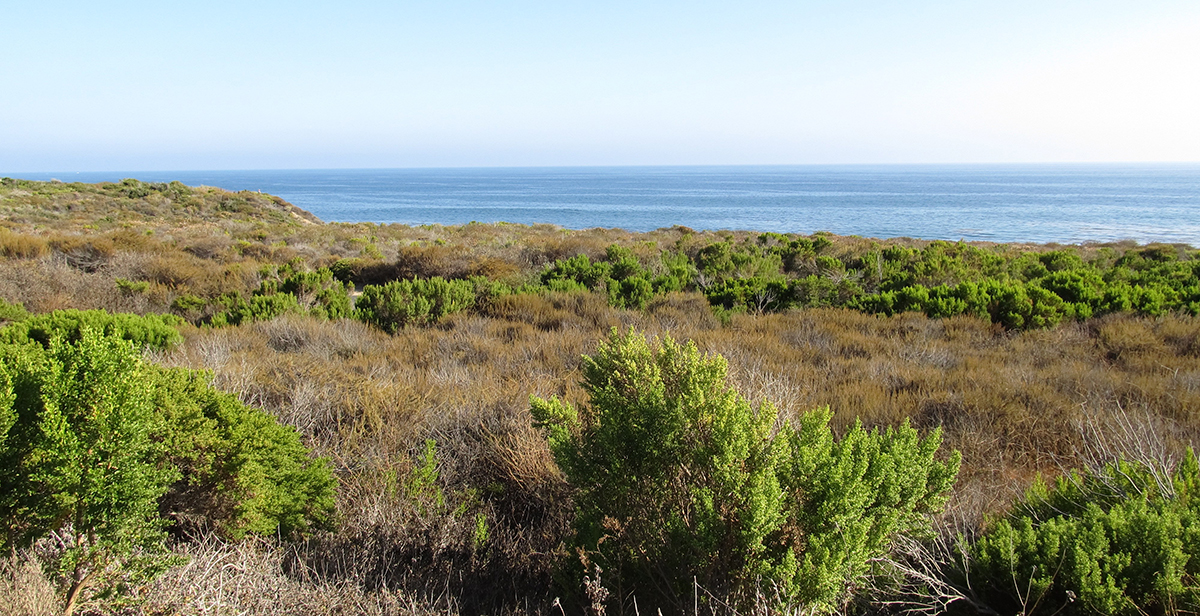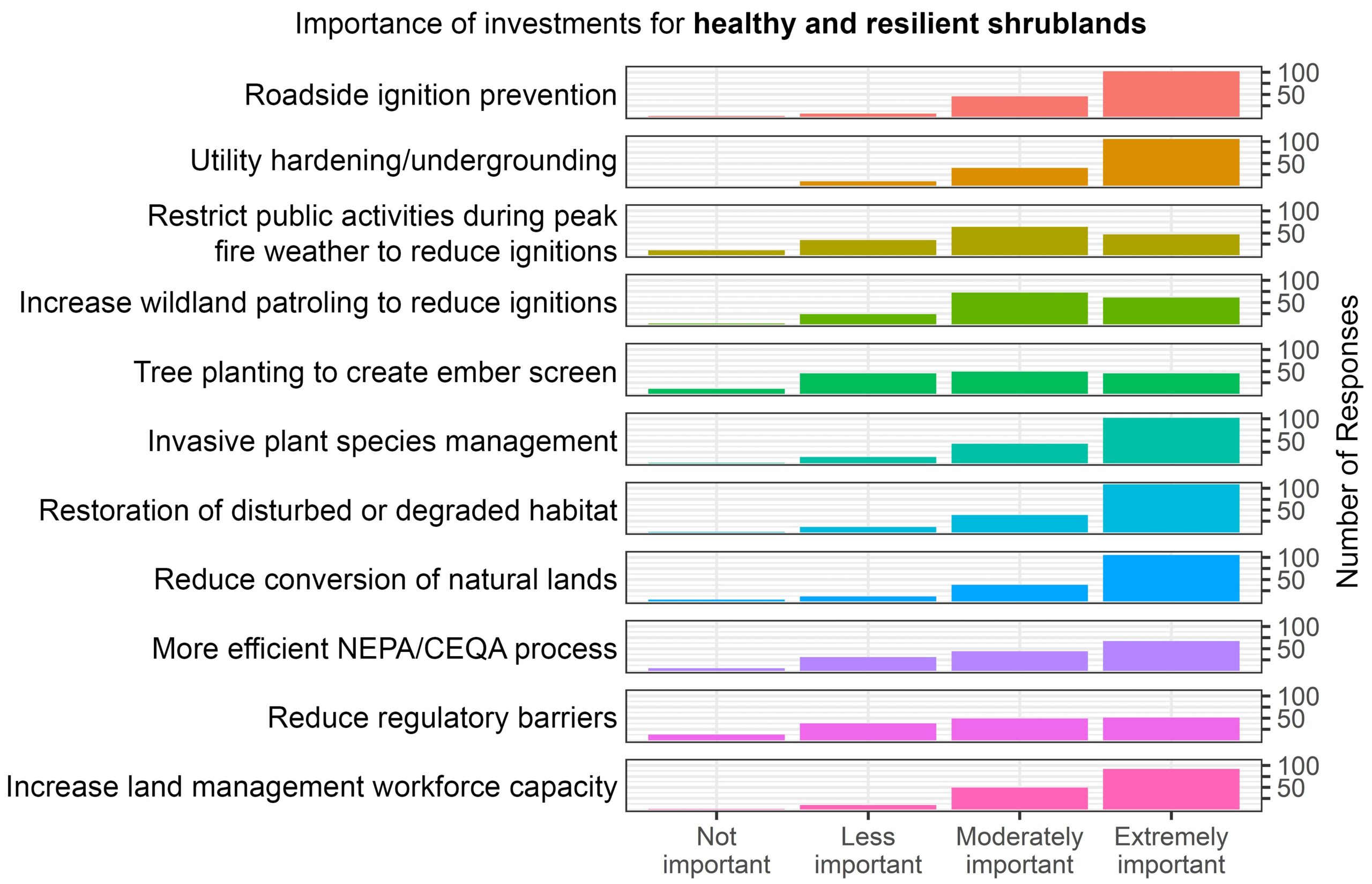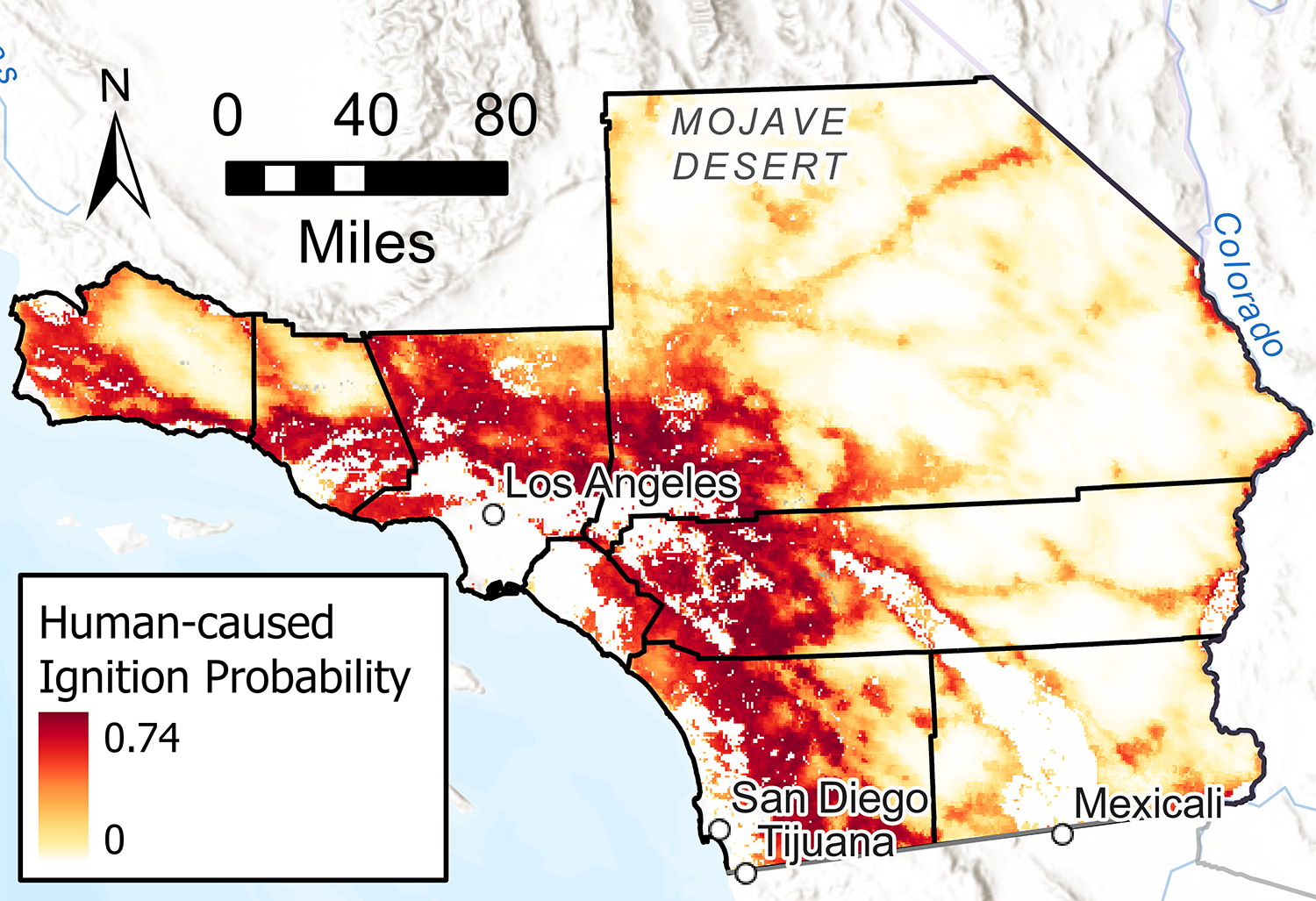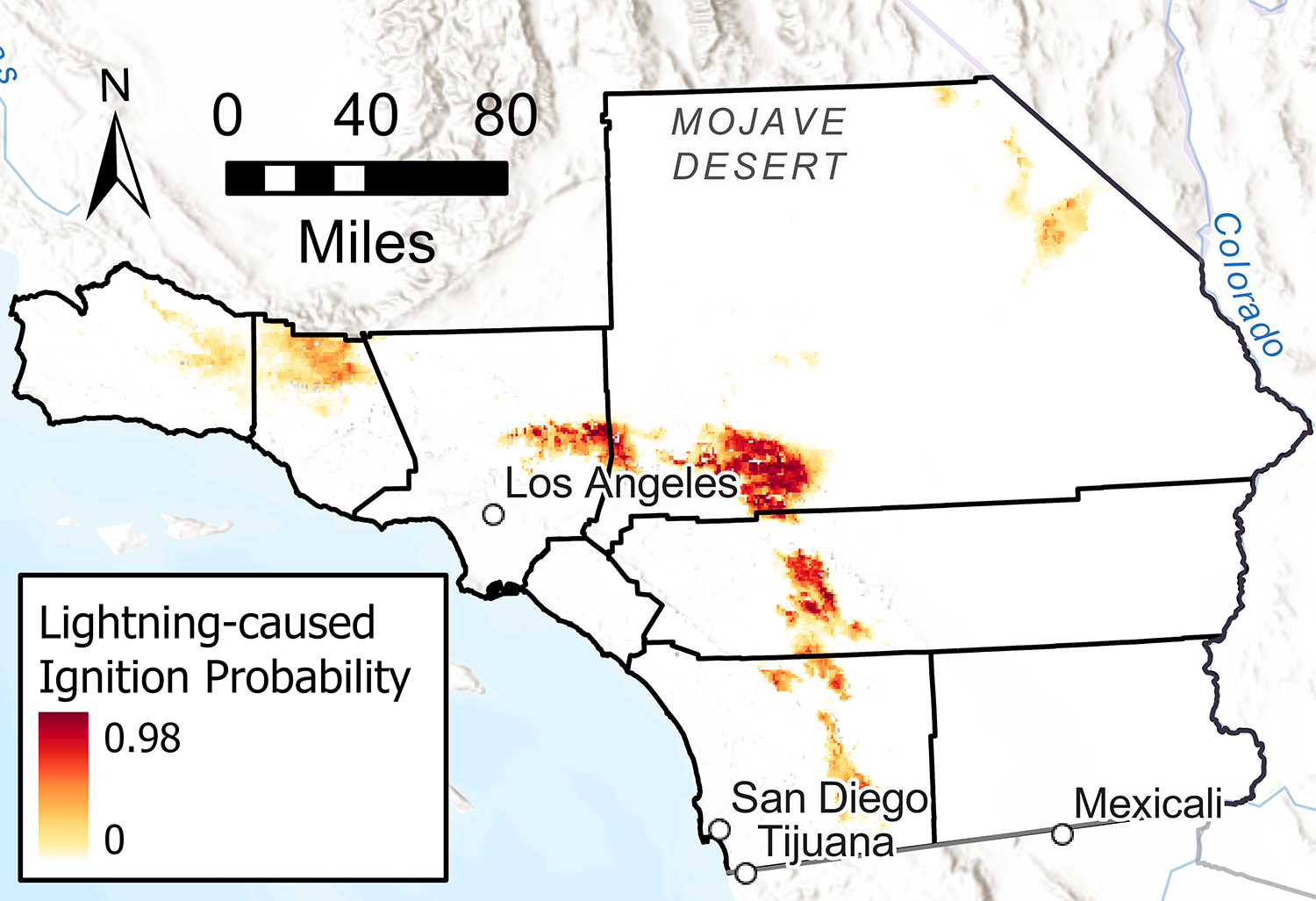Southern California Regional Profile
HEALTHY & RESILIENT SHRUBLANDS

Overview
The largest and most contiguous patches of shrublands are found in the Southern California region. Within this region, shrublands are the dominant ecosystem in low elevation coastal areas, which is also where human presence is concentrated. As a result of human-driven ignitions, wildfires in the region occur primarily in shrublands. Even in Southern California’s four national forests (the Angeles, Cleveland, Los Padres, and San Bernardino), 70% of the vegetation cover is a species-rich shrubland plant community, called chaparral. Another closely associated plant community is coastal sage scrub, which is considered one of the most endangered ecosystems in the United States. Whereas chaparral is dominated by woody evergreen shrub species, coastal sage scrub is dominated by semi-woody and semi-deciduous shrub species. Both ecosystems are highly adapted to drought and fire. However, fire in these ecosystems is currently occurring too frequently.
Since early Euro-American settlement of the region, there has been a misconception that chaparral represents degraded forest, leading to a lack of appreciation for its value as a native ecosystem. More recently, the inclusion of traditional ecological knowledge and additional research on these ecosystems have increased awareness of the important ecosystem services that chaparral provides and clarified misunderstandings about its natural history. Healthy chaparral communities provide numerous ecosystem services including reducing soil erosion, providing critical habitat for hundreds of rare and endangered species, and sequestering carbon into woody biomass. However, even as the value of chaparral is better understood, the ecosystem is increasingly imperiled.
Major threats to both chaparral and coastal sage scrub include past patterns of urban development, too frequent fire, increasing drought associated with climate change, invasion of non-native grasses, air pollution, and unmanaged recreation. Unfortunately, many of these threats can interact and compound one another. For example, increased human-caused ignitions have severely increased the frequency of fire in shrubland ecosystems while drought-stress and encroachment of flammable annual grasses increase the risk of fire spreading and impair ecological recovery. Prior to Euro-American settlement, most chaparral ecosystems experienced fire every 30 to 130 years. Today, due primarily to human-caused ignitions, many areas of Southern California are experiencing fire return intervals of 20 years or less. Multiple short fire return intervals reduce the capacity of chaparral species to regenerate. Shrub species that regenerate exclusively from dormant, underground seed banks are especially susceptible because they do not have time for seedlings to grow to maturity and produce new seed stocks before the next fire occurs. Shrub species that have the ability to resprout, rather than relying on seed banks, generally have a high fire survival rate, but the resprouting process makes these species more vulnerable to water stress. Thus, these resprouting plants may survive fire only to later experience high mortality due to drought or to be outcompeted by invasive grasses that are better adapted to dry conditions and frequent disturbance. This is causing chaparral to disappear and be replaced by nonnative annual grasslands. Furthermore, because grasses can be more flammable than woody fuels like chaparral, this conversion can lead to a positive feedback cycle of increasing fire ignitions and decreasing native shrub species.
Management of chaparral ecosystems has been controversial because actions to improve its ecological resilience to wildfire are different from those recommended to improve forest ecosystems’ wildfire resilience. For instance, removing invasive species and reducing ignitions can benefit chaparral, whereas fuel treatments, via mechanical treatments or prescribed burning, can increase forest ecosystem health. Yet, in some cases, forest-appropriate management actions have been misapplied to shrublands, resulting in detrimental or less effective results to the local ecosystem. However, management actions that cause ecological damage to the treatment site (e.g., strategic fuel breaks), may increase the ecological resilience of the larger landscape by reducing the risk of fire entering the adjacent undisturbed areas and human communities.
Strategic fuel breaks are an example of a management action that include challenging trade-offs. Implementing fuel breaks can provide critical access corridors for firefighters to reduce fire spread. However, both fuel breaks and fuel treatments are less effective against fires that occur during Santa Ana wind events when embers are carried over distances much greater than fuel breaks and land in dry vegetation. Also, fuel breaks can paradoxically increase wildfire hazard by facilitating off-road vehicle trespass, which is associated with increased human-caused ignitions, and increasing the invasion of flammable nonnative grasses in areas that were previously dominated by dense chaparral. Strategically placed and maintained fuel breaks, such as alongside communities, can nevertheless effectively reduce hazard from fires that are not driven by extreme weather events, reduce the risk that ignitions that start near communities become a wildland fire, and increase the safety of firefighters.
Management actions that increase the ecological resilience of native chaparral can also reduce wildfire risk. Disturbed and degraded chaparral habitat that may exist along roadsides, unmaintained fuel breaks, and disused roads, create places for flammable non-native grasses to thrive and increase ignition risks. Restoring these areas with native plants or, where restoration is not possible, with less flammable surfaces (e.g., weed mats, decomposed granite, and concrete canvas) can restrict illegal access, increase fire resilience, and protect or improve ecosystem health. Additional ignition reduction actions include underground burial of power lines, restricting off-highway vehicle access, and building physical barriers along roads to prevent car sparks from igniting roadside vegetation. Other key actions that are being undertaken to help restore shrublands include reducing invasive plant species, planting native species, and protecting natural lands from development.
Stakeholder Perspectives

Survey respondents identified utility hardening/undergrounding, restoring disturbed/degraded habitat, roadside ignition prevention, reducing natural land conversion to development, invasive plant species management, and increasing land management workforce capacity as important areas of investment for achieving healthy and resilient shrublands in their subregion.
Interviewees agreed that preventing human-caused ignitions is key to achieving ecological resilience in shrubland ecosystems. Many also noted the prevalence of common misunderstandings about how to treat shrubland ecosystems. For instance, applying prescribed fire, a treatment which can improve ecological resilience in forests, is especially detrimental to shrublands that are already unable to recover from too frequent fire. However, treatments that may not benefit the ecological health of shrublands are still important for clearing defensible space around human communities and should be applied strategically.
.
Resource Conditions


Understanding spatial patterns in ignition probability is important for assessing fire risk and prioritizing treatments across the region. The Regional Resource Kit ignition
probability metrics reference a model that used recent (1992-2015) ignition records and environmental data, including human settlement, climate, fuels, and topographical variables, to predict lightning-caused (A) and human-caused ignition
probability (B). In Southern California, wildfires ignited by lightning are most likely to occur in a relatively small geographic footprint, which aligns with montane forest landscapes. In contrast, human-caused ignitions are highly probable at lower elevations which coincide with populated areas and along roads.
